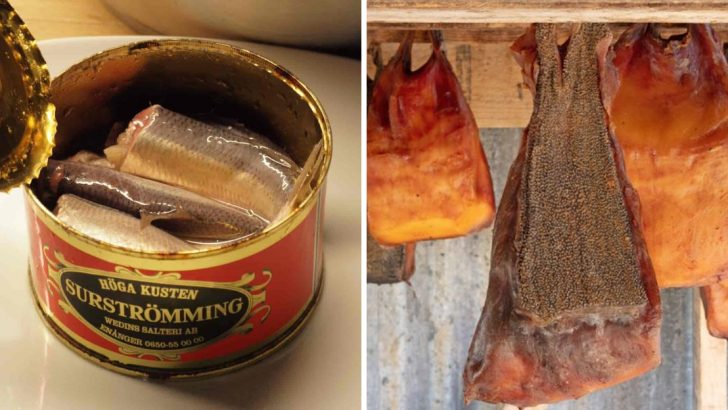Ever wondered what culinary nightmares lurk in distant corners of our planet? The world’s food landscape hides some truly stomach-churning treasures.
Buckle up for a wild ride through dishes that’ll make your typical fast food look like five-star cuisine – these aren’t just bad, they’re legendarily revolting.
1. Surströmming: Sweden’s Fermented Fish Bomb
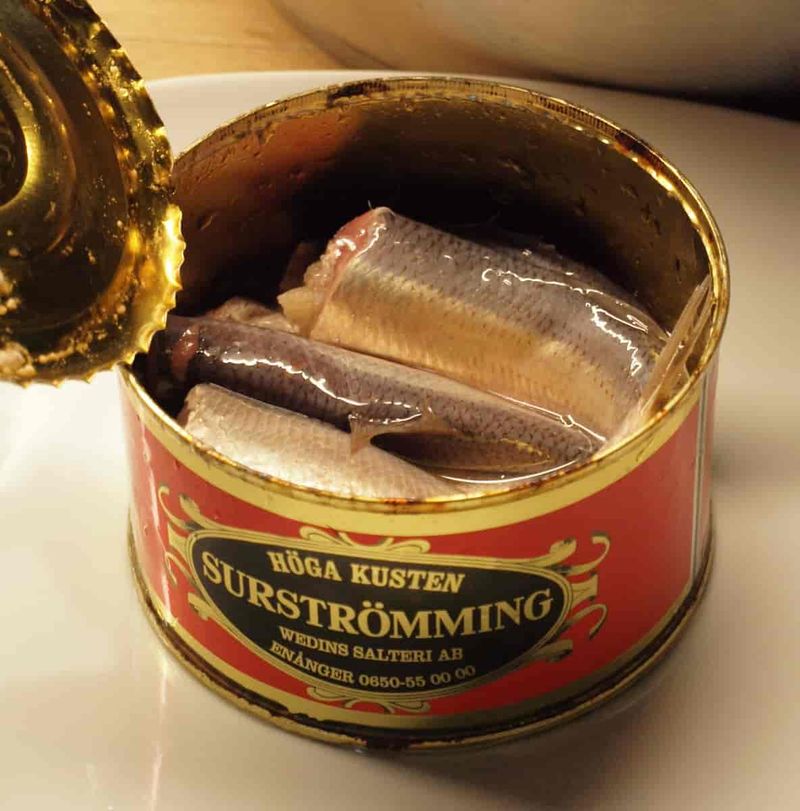
Opening a can of surströmming is like unleashing chemical warfare in your kitchen. This fermented Baltic Sea herring reeks so powerfully that landlords in Sweden specifically ban eating it indoors.
The fish ferments for months until it develops an unholy stench that’s been compared to rotting corpses. Brave souls who try it report an intensely salty, acidic taste that lingers for days.
2. Hákarl: Iceland’s Rotten Shark Cubes
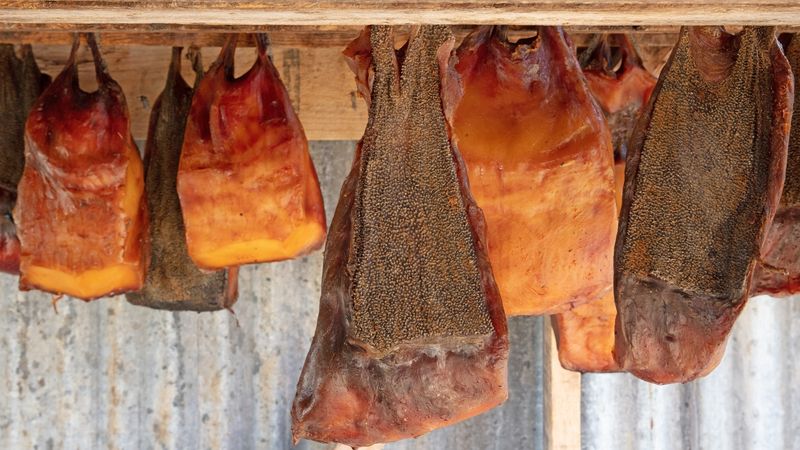
Fancy some urine-soaked, decomposed shark meat? Hákarl begins as poisonous Greenland shark that’s buried underground for months, then hung to dry like toxic laundry.
The fermentation neutralizes the shark’s natural toxins but creates an overwhelming ammonia stench. It’s been described as “the most disgusting thing I’ve ever tasted” by celebrity chef Anthony Bourdain.
3. Century Eggs: China’s 100-Day Surprise
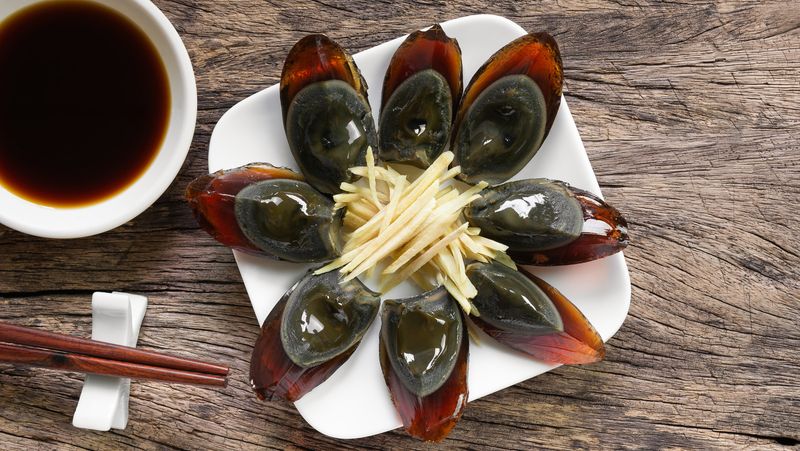
Nothing says “bon appétit” quite like eggs preserved in clay, ash, and quicklime for months until they transform into gelatinous black orbs with green-gray yolks. The smell? Pure sulfur.
Century eggs develop crystalline patterns throughout their whites that resemble pine branches. Despite looking like something excavated from a prehistoric tar pit, they’re considered delicacies in China.
4. Casu Marzu: Sardinia’s Maggot Cheese
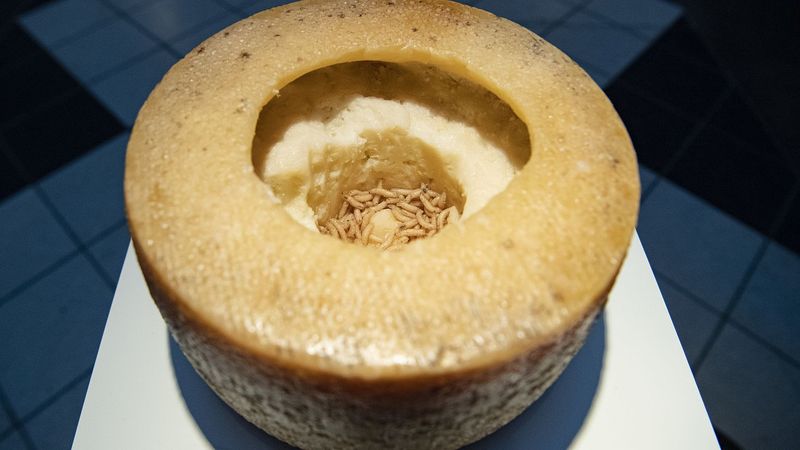
Cheese lovers, meet your nightmare. Casu marzu is Pecorino cheese deliberately infested with live cheese fly larvae that digest the fats, making it soft and liquidy.
The wiggling maggots must be alive when you eat it – dead ones indicate the cheese has become toxic. The taste? Intensely sharp with a burning sensation that lasts hours.
5. Balut: The Philippines’ Embryonic Snack
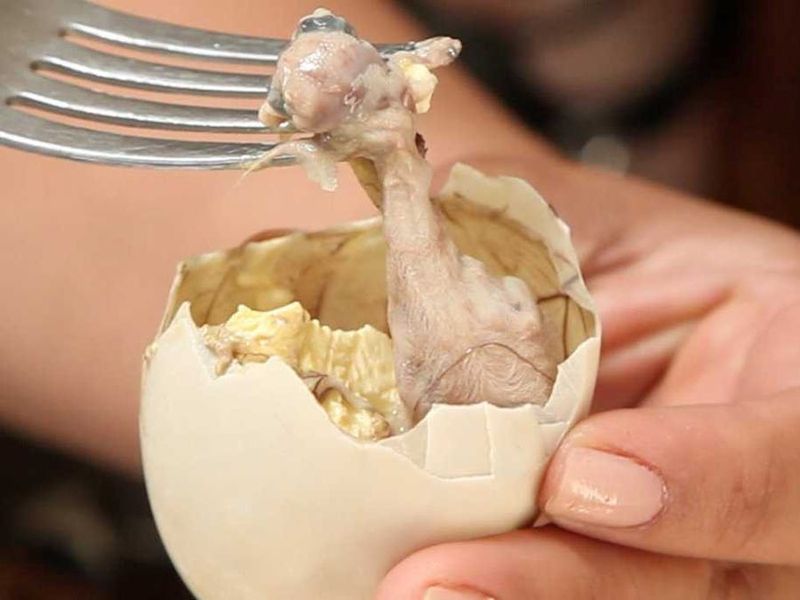
Crack open a balut egg and you’ll find a partially developed duck embryo – feathers, beak, bones and all – swimming in its own juices. Street vendors sell these 17-21 day old fertilized eggs as everyday snacks.
Locals recommend slurping the warm liquid first, then devouring the undeveloped duckling in one bite.
6. Nattō: Japan’s Sticky Bean Situation
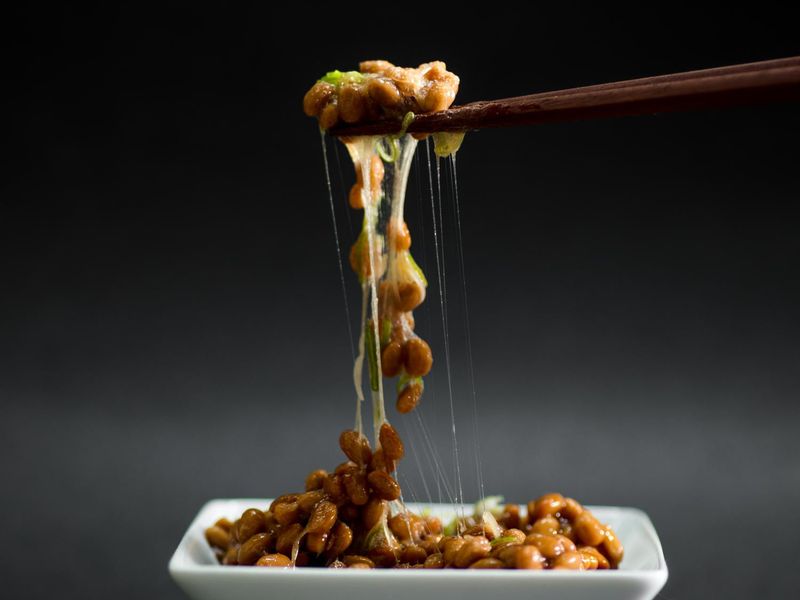
Imagine soybeans covered in spider webs of bacterial mucus with an aroma combining sweaty gym socks and ammonia. Welcome to nattō, Japan’s notoriously divisive breakfast food!
When stirred, these fermented soybeans develop stringy, sticky strands that stretch several feet. The texture resembles beans coated in glue.
7. Durian: Southeast Asia’s Forbidden Fruit
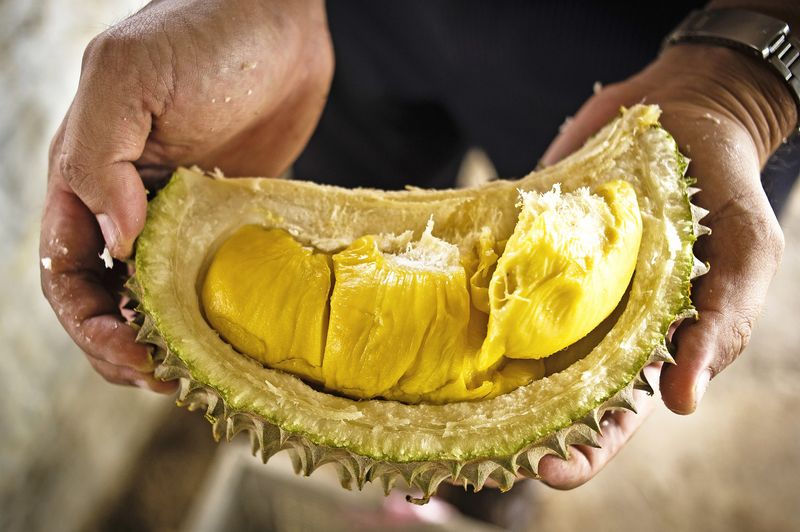
Banned from public transportation and hotels across Southeast Asia, durian’s stench has been compared to rotting onions, sewage, and gym socks all rolled into one spiky package. Holding your nose won’t help – the flavor infiltrates your taste buds directly.
Devotees describe the flesh as custard-like with complex sweetness.
8. Kiviak: Greenland’s Bird-In-Seal Delicacy
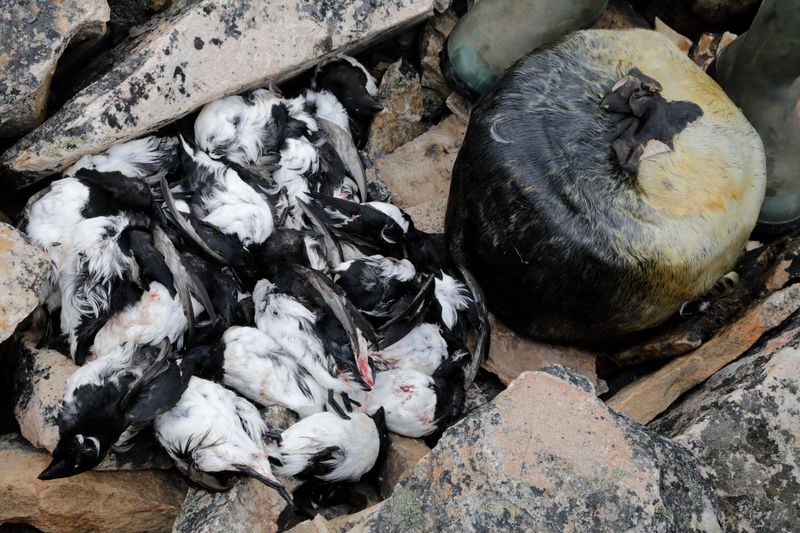
Picture this: 500 whole small birds (complete with feathers) stuffed inside a hollowed-out seal carcass, sewn shut, then buried under rocks for months to ferment. What emerges is kiviak – a decomposing mass that Inuit communities consume during winter celebrations.
The fermented birds are eaten entirely – beak, bones, feathers and all.
9. Escamoles: Mexico’s Insect Caviar
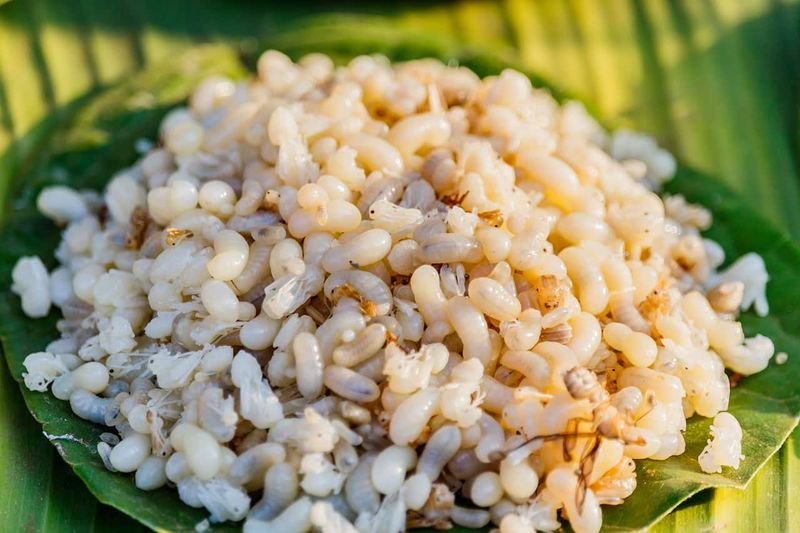
Nicknamed “insect caviar,” escamoles are ant larvae harvested from the roots of agave plants in Mexico. Gatherers risk painful bites from aggressive guard ants to collect these pale, rice-like eggs.
The texture resembles cottage cheese that pops between your teeth. Flavor-wise, expect nutty butter notes with a slightly acidic finish.
10. Stinkheads: Alaska’s Fermented Fish Heads
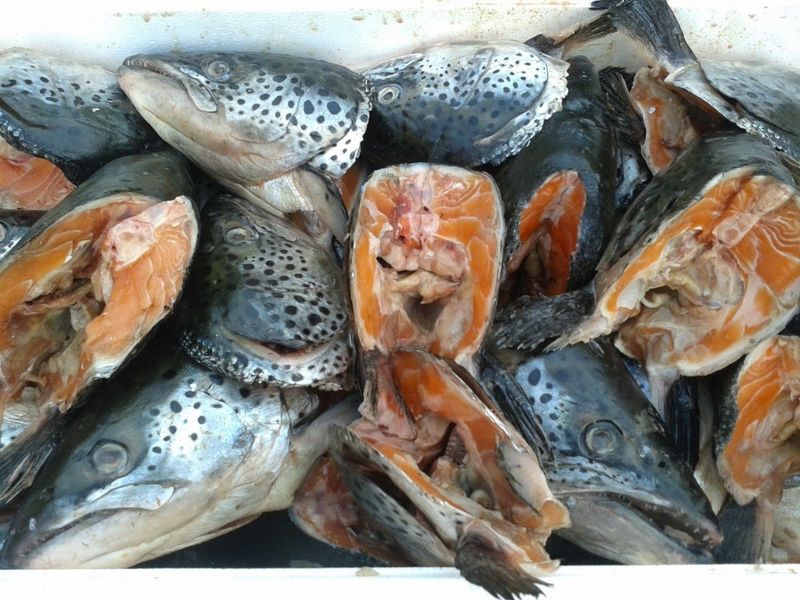
When Alaskan Natives bury fish heads in the ground for weeks until they reach the consistency of mashed potatoes, you get stinkheads – possibly the most accurately named food on Earth. The putrid smell can be detected from astonishing distances.
Traditional preparation involves wrapping king salmon heads in grass, burying them in moss-lined pits, then letting them decompose.
11. Fried Tarantulas: Cambodia’s Crunchy Arachnids
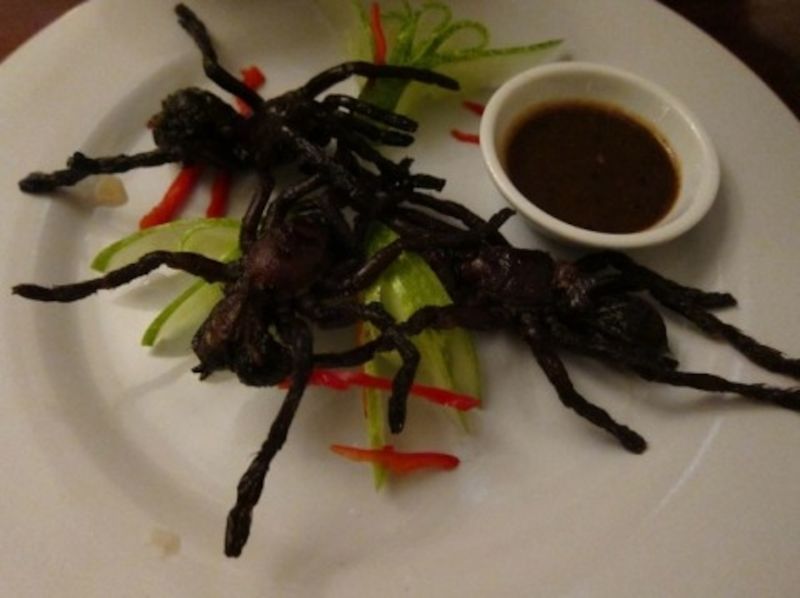
Street vendors in Cambodia offer deep-fried tarantulas the size of your palm – complete with hairy legs, fangs, and abdomen filled with brown paste. These eight-legged snacks became popular during food shortages under the Khmer Rouge.
Most tourists manage one bite before discretely wrapping the remainder in napkins.
12. Tuna Eyeballs: Japan’s Ocular Delicacy

Staring back at you from Japanese supermarket shelves are golf ball-sized tuna eyeballs, complete with optic nerves still attached. Pop one in boiling water or fry it up for a snack that watches you while you eat it.
The eyeball consists of several textures: the cornea is chewy like squid, the pupil is hard and crunchy. Flavor-wise, it’s surprisingly mild.
13. Shirako: Japan’s Male Cod Surprise
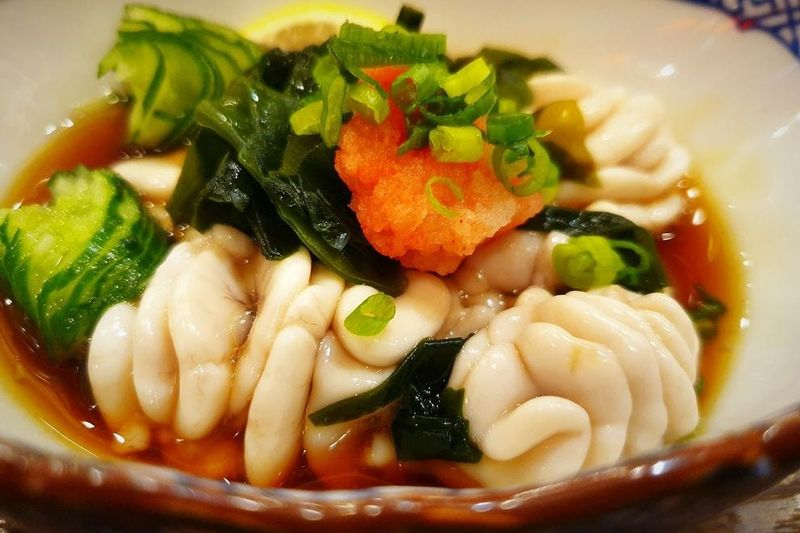
Those creamy white blobs in your high-end Japanese restaurant? That’s shirako – raw male cod sperm sacs. Imagine soft, brain-like pouches filled with milky seminal fluid that burst in your mouth.
Often served raw with ponzu sauce or lightly cooked in hot pot dishes, shirako has a custardy texture that melts on your tongue.
14. Virgin Boy Eggs: China’s Controversial Snack
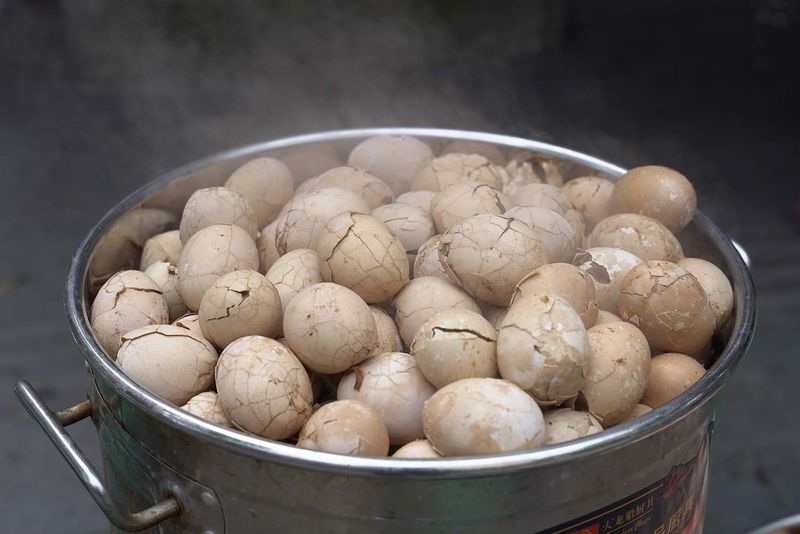
In Dongyang, China, vendors sell eggs soaked and boiled in the urine of young boys – specifically collected from primary school bathrooms. The urine is gathered daily from schools, then used to prepare this local springtime delicacy.
Locals claim these eggs prevent heat stroke and promote circulation. They sell for nearly twice the price of regular eggs.
15. Fruit Bat Soup: Guam’s Flying Fox Stew
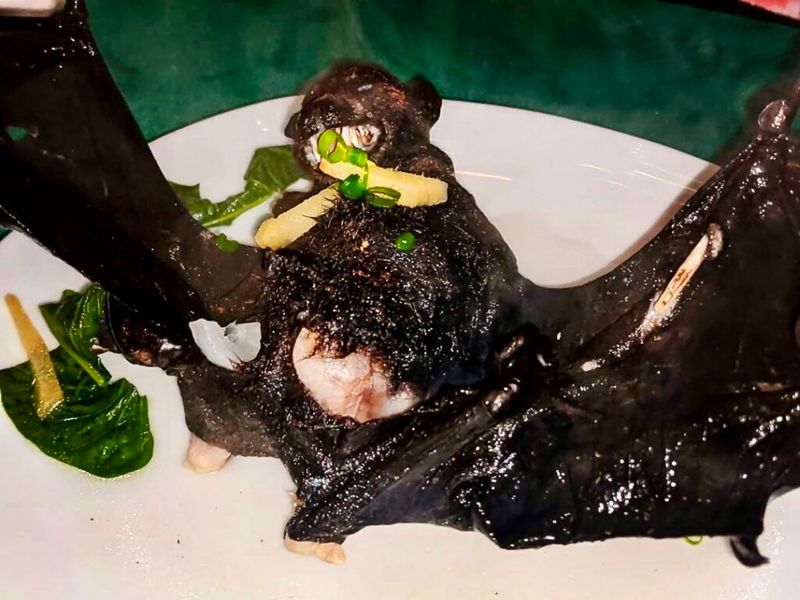
Whole fruit bats – fur, wings, head and all – simmered until their bodies dissolve into a murky broth. That’s fruit bat soup, a traditional delicacy in Guam and other Pacific islands that’s now endangered its main ingredient.
The soup has been linked to neurological diseases due to toxins that accumulate in the bats’ bodies.
16. Fugu: Japan’s Deadly Fish Gamble
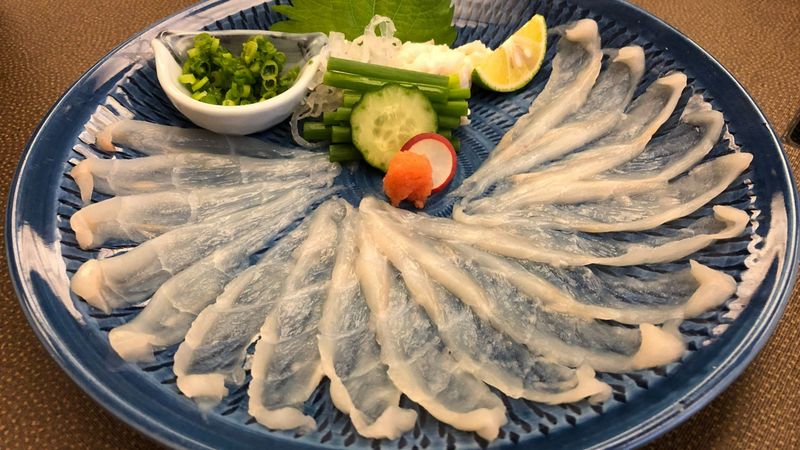
One wrong cut by your chef and dinner becomes your last meal. Fugu (pufferfish) contains tetrodotoxin – a poison 1,200 times deadlier than cyanide with no known antidote.
Chefs train for years to earn fugu preparation licenses, meticulously removing toxic organs. The properly prepared flesh offers subtle flavor and slight tingling or numbness around the mouth.

